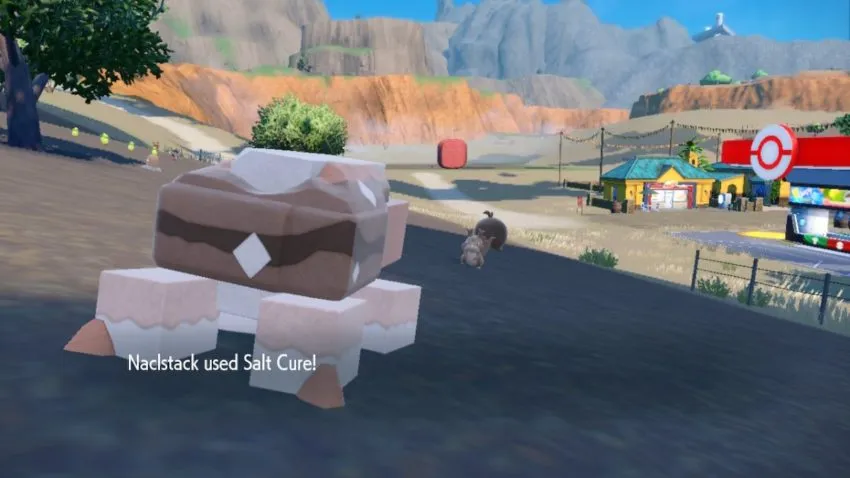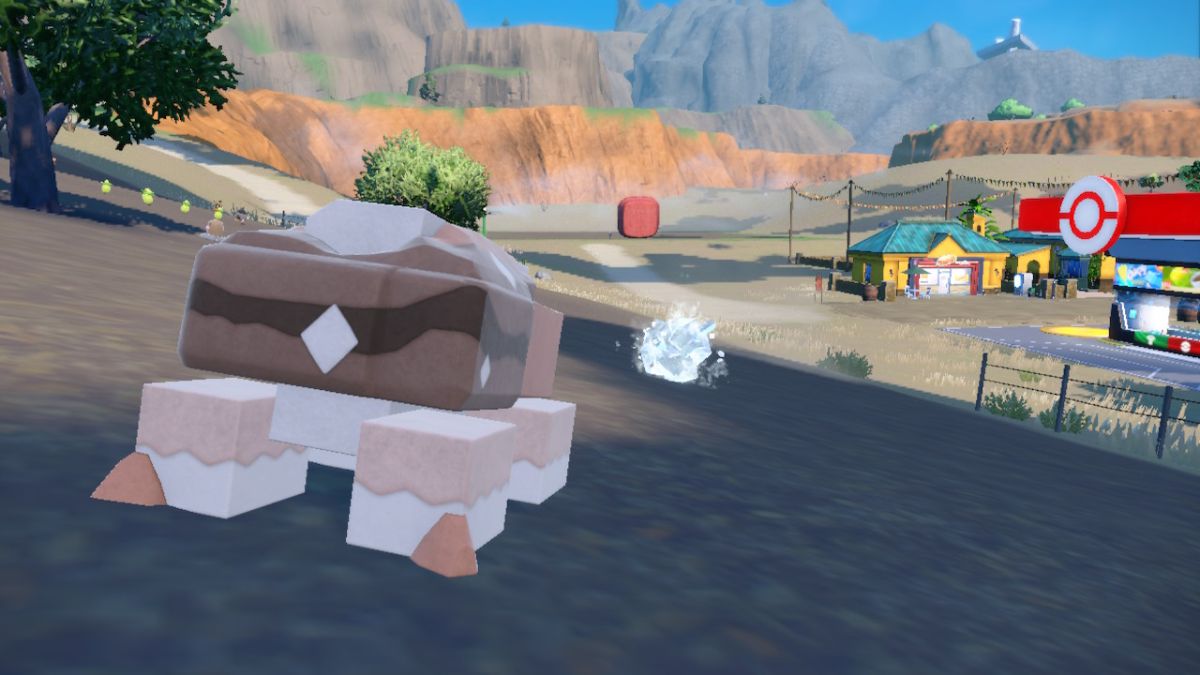Salt Cure is one of the many new Pokémon moves introduced in Pokémon Scarlet and Violet. It is the signature move of Naclstack and Garganacl, the cube salt Pokémon introduced in the game. Given that the word “cure” is in its name, many fans are confused if the move is a healing-type move or if it’s a damage-dealing move. We’re here to help clarify what the Salt Cure move does and explain if it’s used for healing or attacking.
Related: How to unlock all four Research Stations in Pokémon Scarlet and Violet
Salt Cure in Pokémon Scarlet and Violet, explained

Salt Cure references the saying, “rubbing salt in the wound,” a phrase used to describe when something difficult becomes even worse. For example, receiving a flat tire while you are already late to work can be classified as “salt in the wound” because your situation has gone from bad to worse. The phrase stems from the fact that putting salt on open wounds makes the injury feel even more painful.
The full description of Salt Cure reads, “[t]he user salt cures the target, inflicting damage every turn. Steel and Water types are more strongly affected by this move.” When Naclstack or Garganacl throws salt at you, it isn’t to “cure” you; it is to harm you because salt on the open wound will sting you. The damage inflicted by Salt Cure is taken at the end of every turn because salt wounds will often linger long after being applied.
The attack causes extra damage to water and steel-types because of real-world examples. Salt water covers most of the Earth, and salt easily dissolves into any kind of water. While you would assume that would make water stronger against salt, the Pokémon Company chose to interpret salt dissolving into the water as meaning salt infecting the water with its flavor. The minerals that make salt are also very corrosive to carbon steel, which is why Salt Cure causes extra damage to steel-types.







Published: Nov 22, 2022 03:13 pm